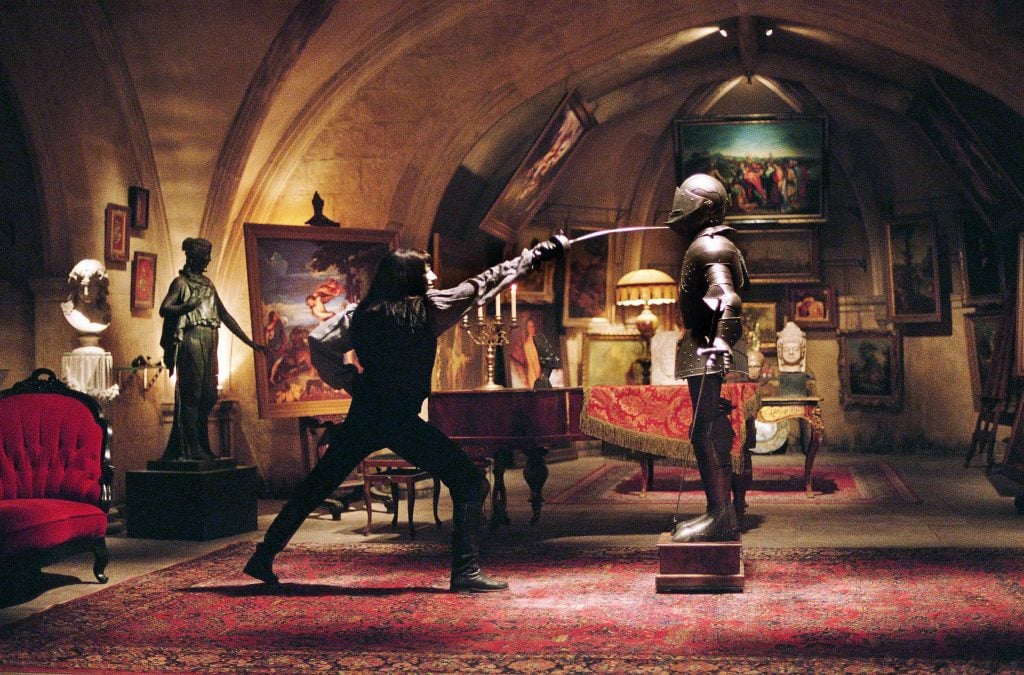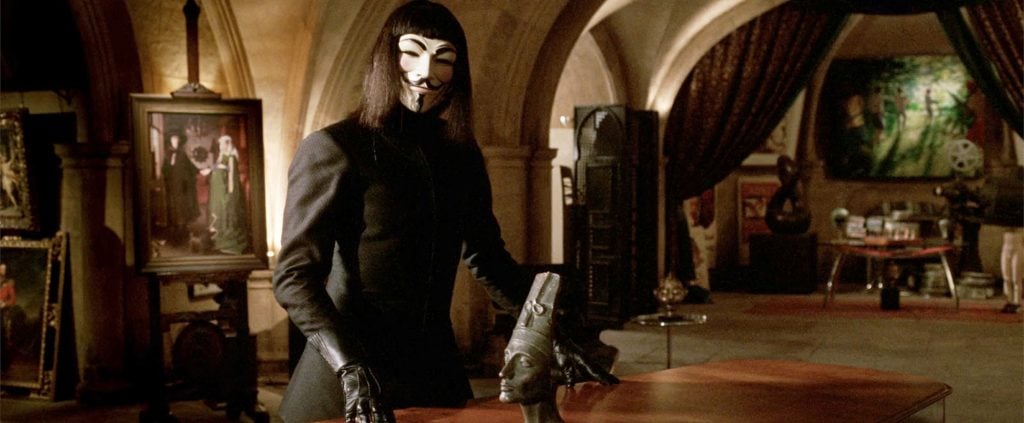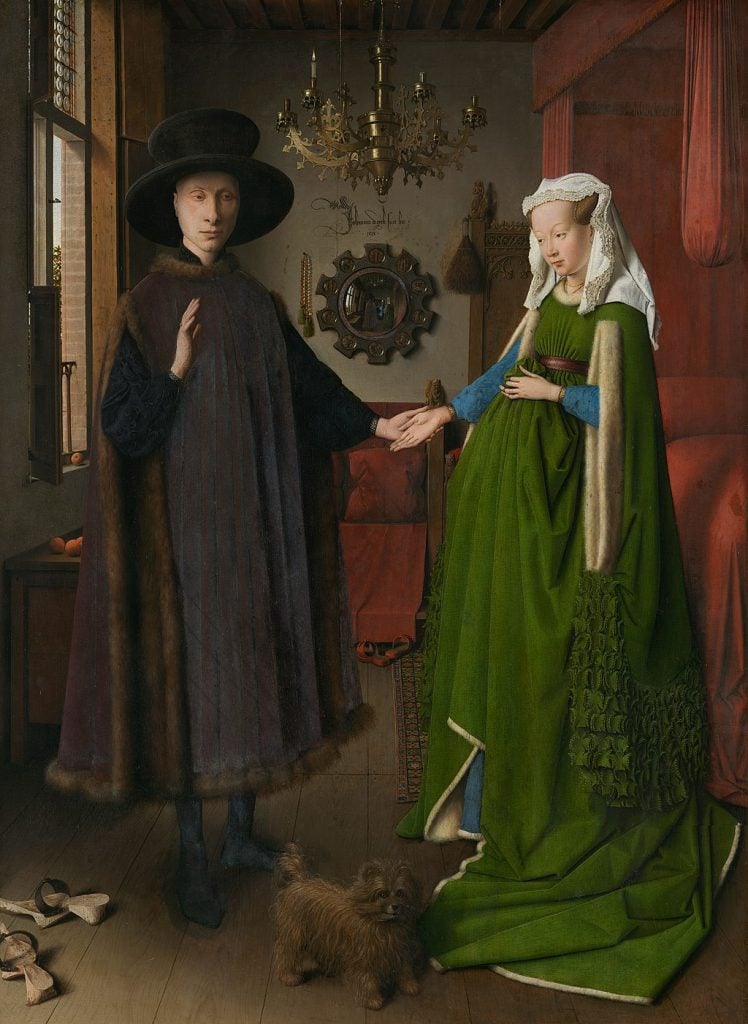Pop Culture
As Seen on ‘V for Vendetta’: A Shadow Gallery of ‘Objectionable’ Art
A freedom fighter's underground lair is crammed with works by Titian, John William Waterhouse, and Jan van Eyck.

We don’t get to see much of V, the titular anti-hero played by Hugo Weaving in V for Vendetta, the 2005 film based on the seminal graphic novel by Alan Moore and David Lloyd. His face, for one, remains obscured behind a Guy Fawkes mask and under a wig. But his vendetta is clear: to overthrow the oppressive government exercising a tyrannical hold on a near-future Britain and curbing the freedoms of its populace.
To do so, the enigmatic vigilante recruits Evey (Natalie Portman), a lowly employee at a state-run TV station, in whom V recognizes a certain grit. After he seizes control of her station’s network to take credit for an attack on London’s Old Bailey, Evey helps him escape, only to be knocked flat unconscious. To prevent her arrest, V bundles her up and transports her to his underground lair.
There, Evey awakes to a curious space crammed full of books, movie posters, sculptures, and a Wurlitzer jukebox playing Ella Fitzgerald’s “Cry Me a River.” An apse is hung frame-to-frame with artworks—John William Waterhouse’s The Lady of Shalott (1888) is there, as is Titian’s Bacchus and Ariadne (1520–23). Prominently on a dedicated easel sits Jan van Eyck’s The Arnolfini Portrait (1434).

Hugo Weaving in V for Vendetta (2005). Photo: Screen grab.
“Where did you get all this stuff?” Evey asks V.
“Oh, here and there,” he responds. “Much of it from the vaults of the Ministry of Objectionable Materials.”
V has christened the crypt his Shadow Gallery. But no, he tells Evey, he did not steal any of these works—he’s merely liberated them from the censors. And if officials should stumble on his gallery, “a few bits of art would be the least of my worries.”
There’s clearly nothing all that “objectionable” about any of the artworks hanging in V’s Shadow Gallery. Paintings like William Blake’s Elohim Creating Adam (1795) and Andrea Mantegna’s St. Sebastian (1456–59) offer a high-minded religious bent, while Francesco Guardi’s Capriccio with a Ruined Archway by the Banks of a Lagoon (1712–93) is an innocuous landscape. Their inclusion here appears to point more to the government’s iron-fisted control that has deemed all creative expression unacceptable for mass consumption.

Jan van Eyck, The Arnolfini Portrait (1434). National Gallery, London.
But Van Eyck’s portrait, which hangs in London’s National Gallery IRL, was quite likely picked by the filmmakers for another reason. V for Vendetta famously features numerous shots of the shape of the letter “V,” much like the name Evey echoes V, as does the Latin phrase “Vi veri universum vivus vici,” carved into one of V’s mirrors. And the Arnolfini composition does too: in it, the eponymous Italian merchant is depicted reaching out with his hand to hold that of his resplendently dressed wife, their arms forming the desired V.
The scattering of Vs throughout the movie imprints the freedom fighter’s presence across the dystopian landscape, its prevalence allowing it to prevail. We might not get to see the face of V, the film seems to say, but already, we see him everywhere.
As Seen On explores the paintings and sculptures that have made it to the big and small screens—from a Bond villain’s heisted canvas to the Sopranos’ taste for Renaissance artworks. More than just set decor, these visual works play pivotal roles in on-screen narratives, when not stealing the show.





